Notable Projects
Learn more about the SMSC's environmental projects, which are geared toward resource protection, sustainability and responsible stewardship:
Water Management
Arctic Lake Study and Restoration
Arctic Lake is a 23-acre basin located within a 506-acre watershed. It is in the North Central Hardwood Forest (NCHF) ecoregion, and falls into the Minnesota Pollution Control Agency’s deep lake category. Land use surrounding the lake include agriculture, prairie restoration, and recreational hunting. Thorough observations and monitoring begun back in 2000, as well as studies like the one completed in September 2013 by a joint commission of the SMSC, the City of Prior Lake, and the Prior Lake – Spring Lake Watershed District. Several points to improve the ecosystem of the Arctic Lake have been identified. These solutions include iron-enhanced sand filters to reduce high concentrations of algae-promoting nutrients, drainage and storage enhancements to restore health to the wetlands area, and a new walking path. All of these measures are designed to both support the natural balance of the lake as well as to enhance the aesthetic experience.
Water Reuse
To support responsible water use, the Shakopee Mdewakanton Sioux Community has an irrigation system that uses recycled water from its Water Reclamation Facility (WRF) to irrigate maintained green space on the reservation. Cleaned effluent water is discharged from the WRF, flows through a series of ponds and wetlands (where it joins other upstream sources), and is pumped and piped for irrigation. Saving groundwater for drinking and personal use while using surface water for irrigation is an important conservation measure.
Habitat Management
Prairie and wetland restoration projects
Wetlands and prairies were once widespread in Scott County, and the SMSC is dedicated to restoring both ecosystems on the reservation landscape. The SMSC uses a number of methods to promote native species establishment within prairies and wetlands. The SMSC has recreated more than 600 acres of prairie habitat on reservation lands by selecting sites for native perennial vegetation, planting native seeds, and providing post-restoration management. The result has been the resurgence of many species of wildlife, especially grassland birds, the population of which declined drastically in the last 50 years. The SMSC has more than 500 acres of wetland habitat. Many of these wetlands have been protected with tallgrass prairie buffer areas. The SMSC has restored dozens of prairie restorations and several wetlands, and more are currently underway or planned. A current project is the Dakota Slough Wetland Bank, located north of County Road 14 and west of Marschall Road. The goal is to restore the 53-acre site to a highly functional, diverse wetland ecosystem and upland prairie buffer.
Prescribed Fire Operations
Prescribed fire has been used in the SMSC's natural areas since 2001. A prescribed burn is an intentionally lit, controlled fire used by land managers to replicate natural wildfires. Many ecosystems, such as Tallgrass Prairies and Oak Savannas, evolved with fire and are largely dependent on frequent fire cycles. Historically, low intensity fires—lit strategically by Native Americans or naturally by lightning strike—would burn these natural areas on a three to five-year cycle, though sometimes annually. Today, fire prevention activities inhibit these natural fire cycles and leave most natural areas overgrown. This causes a dangerous build-up of fuels, such as dry prairie grass and other vegetation that would ignite quickly in the event of an accidental fire. In this case, natural areas are also susceptible to being invaded by non-native species. Land managers use prescribed fire in safe and efficient ways to replicate the historic fire cycle and as a management tool to enhance native ecosystems. Prescribed burns benefit natural communities by removing dead plant material, increasing plant biomass and diversity, adding nutrients to the soil, releasing native seed banks, and diminishing non-native species. This process reduces fire hazards overall and improves the health of the land. View this short video on prescribed burns conducted at the SMSC.
Wildlife Surveys
The SMSC conducted a five-year wildlife survey to observe species of reptiles, amphibians, birds, and mammals that live and breed on SMSC lands. Staff biologists created a survey grid of 70 40-acre sampling units. The survey grid covered all SMSC habitat, such as prairie, forests, meadows, wetlands, and farm fields. Various survey methods were used to observe wildlife species, but the main objective was to determine the presence (or absence) of a particular species. Results of the survey included 147 total species. Observed during the survey were 105 birds, 29 mammals, 7 amphibians, and 6 reptiles. Outside of the five-year survey, we have noted an increasing amount of wildlife species as SMSC's restoration efforts have expanded. Some species identified since the original survey include Northern Harrier, Rough-legged Hawk, Red-shouldered Hawk, Short-eared Owl, and Henslow's Sparrow. We suspect that we have a population of American Badgers utilizing larger restored prairies due to the existence of large excavation tunnel networks. We're using trail cameras to investigate the actual cause.
Nesting Bird Boxes
Staff have installed about 100 bluebird boxes and 20 wood duck boxes on SMSC land. We experiment with these nest boxes to determine suitable locations for targeted bird species. Nest boxes are intended to provide habitat to secondary cavity nesting birds. Secondary cavity nesters are birds that use existing cavities to build a nest—instead of excavating a new one like a woodpecker, a primary cavity nester. As settlers cleared forests for fuel, building, and agriculture in the 20th century, the population of many secondary cavity nesters drastically declined. So far, we have observed many species nesting in our boxes: American Kestrel, Hooded Merganser, and Wood Duck. Species observed in our bluebird houses include House Wren, Tree Swallow, Black-capped Chickadee, House Sparrow, and Eastern Bluebird. SMSC Land and Building Services Department staff routinely monitor the boxes to determine how many eggs and chicks are produced per species within a breeding season. This helps inform any improvements, removal or movement of the boxes.
Invasive Species Management
Non-native, invasive species are the single greatest threat to the SMSC's natural areas. Reed canary grass, purple loosestrife, and hybrid cattail choke out a vast array of native species, reducing the diversity of plant life in wetland ecosystems. The resulting habitat is far less useful for wildlife species that evolved to utilize the myriad native wetland species. The same goes for the SMSC's prairies. Species such as Canada thistle, leafy spurge, birdsfoot trefoil, and smooth bromes are widespread here and across much of North America. The SMSC manages invasive species through a number of methods, including prescribed burns, special mowing techniques, and highly localized chemical treatments. Although these are effective ways to limit the spread of harmful species, invaders are very difficult to eradicate once established. The SMSC is creating an Invasive Species Management Ordinance. This will prohibit the handling or planting of invasive species on SMSC lands. Aquatic Invasive Species (AIS) are a great concern in Minnesota's shallow and deep water lakes. Common AIS are Eurasian milfoil and zebra mussels. The SMSC is planning an AIS survey of its deep-water habitats to document any invasive species. The public's role in managing AIS is to follow local lake procedures, which include cleaning off boats and trailers and draining any water that may be left in boats before leaving a water body.
Forest Management
Forest habitat once dominated SMSC lands and most of Scott County. Several forest ecosystems were present before settlement, but sugar maple/basswood forests were the most widespread. These forests take several hundred years to develop. The canopy is so dense that it blocks most sunlight from reaching the forest floor. A specific group of species evolved in this sunlight-excluded environment: spring ephemerals. Spring ephemerals are so named because they complete their life cycle when sunlight is available—before forest canopies leaf out. This group of plants is highly specialized and includes a diverse array of forest floor wildflowers. Remnant sugar maple/basswood forests are still present on SMSC lands, but human activity and invasive species have disturbed and fragmented them. Common and glossy buckthorn, tartarian honeysuckle, and garlic mustard are some of the most aggressive non-native species competing with native forest species. SMSC forests provide habitat for game species, including the white-tailed deer and wild turkey, both of which have stable populations on SMSC lands. Wozupi Tribal Gardens, owned and operated by the SMSC, tap the maple trees to produce 100-percent pure maple syrup.
Construction
Water Reclamation Facility Green Roof
In 2006, the Shakopee Mdewakanton Sioux Community (SMSC) constructed the largest green roof in the upper Midwest at its new Water Reclamation Facility. The 30,200 square-foot green roof contains more than 45,000 plants, including native prairie grasses, flowers and even wetland species. By the end of the first full growing season in 2007, the green roof had achieved 60% vegetative cover. The green roof system disperses significant amounts of water back into the atmosphere through evaporation and transpiration, contributes to temperature regulation by mitigating the urban heat island effect, and helps prevent flash flooding. During dry spells, the plant life on the roof can be supported using reclaimed wastewater from the Water Reclamation Facility’s treatment process, yet another benefit of the high level of treatment the facility provides. The Green Roof also has an extended roof life because it is protected from ultraviolet radiation. A typical roof will last about 12 years; the Green Roof is designed to last 50 years.
Dakotah! Sport and Fitness Green Roof
In 2008, the Shakopee Mdewakanton Sioux Community (SMSC) completed construction on their largest green roof to-date, on the new ice area at Dakotah! Sport and Fitness. The 32,600 square-foot green roof contains more than 50,000 plants. The construction of this new green roof multiplies all of the benefits of the initial roof constructed atop the Water Reclamation Facility.
Dakotah! Ice Center Pervious Pavement
The 72,000 square feet Dakotah! Ice Center was designed with state of the art energy efficiency and environmentally friendly components. In addition to a 32,000 square foot green roof, 16 solar panels, rain gardens, and recycled benches, the ice center features 14,000 square feet of VAST Permeable Composite Pavers installed along the parking lot center aisle and at the entrance of the facility. Light weight, durable, maintenance free VAST paver is made from 95% recycled tire rubber and plastics and is manufactured with zero waste or harmful emissions. Every 1,000 square feet of VAST Composite Pavers saves 500 scrap tires and 15,000 plastic bottles from landfills. All VAST Composite Pavers can be removed and recycled into new pavers.
Community Center Pervious Pavement
The purpose of this project was to reduce water quality impacts and the alteration of the plant and wildlife communities from polluted runoff by reducing impervious surface coverage and treating runoff through bioretention. Prior to this project, the entire site was comprised of impervious asphalt and metal rooftops. This project removed 1.7 acres of impervious surface and replaced it with features to improve water quality and allow the water to enter the wetland at a slower rate. To minimize the contaminants entering the pervious asphalt, drainage to the lot from external sources was minimized. This was done by capturing most of the runoff before it enters the pervious asphalt. Most of the site drains to a pervious paver patio or a bioretention area. The entire site, with the exception of asphalt, was planted and covered with mulch or seeded with buffalo grass and covered with erosion control blanket. All open soil was covered and any other project debris was removed from the site.
Alternative Heat and Energy
Solar Power
The Shakopee Mdewakanton Sioux Community has installed nearly 300 solar panels around the reservation, including at the Organics Recycling Facility, the Dakotah! Ice Center, Mdewakanton Public Safety and the Public Works Building. Skylights in a number of SMSC buildings – ranging from the fire station to the Dakotah! Ice Center – complement the solar panels by reducing daytime energy usage.
Environmental Review
Inyan Ceyaka Otonwe (ICO) Fee to Trust
An opportunity to provide public comment is available on the Environmental Assessment of SMSC's Inyan Ceyaka Otonwe (ICO) fee to trust request and the Bureau of Indian Affairs "Finding of No Significant Impact". The SMSC will be guiding this land use toward 69 residential lots, a 14-acre wetland restoration under a conservation easement with Scott Soil and Water Conservation District, a realignment of County Highway 81 (Stemmer Ridge Road), and potentially a joint water treatment facility with the City of Prior Lake.
There is a 30-day comment period on the Environmental Assessment that will end on January 15, 2017.
Land, Water, Air
From rain gardens to windmills, the environment is at the forefront of our commitment to improving the lives of our residents and the surrounding community. Find out more about our environmental projects and enterprises:












